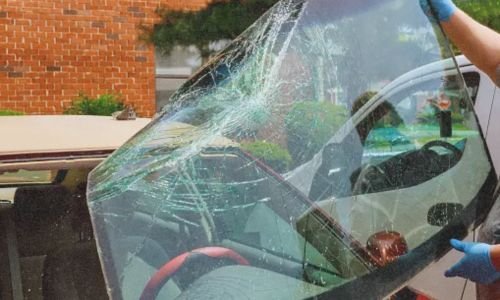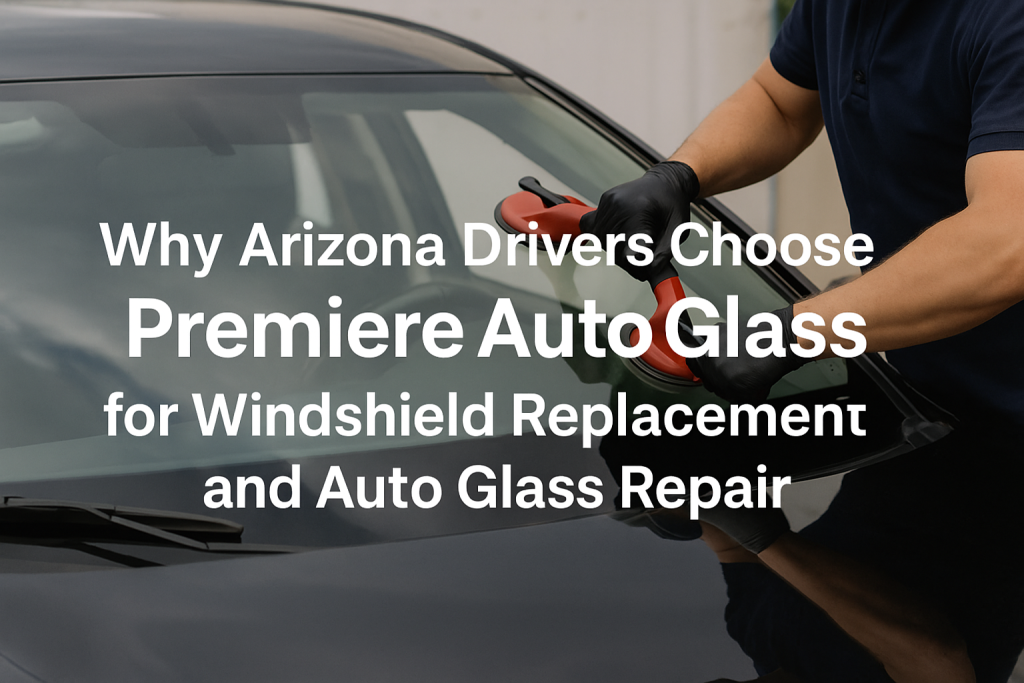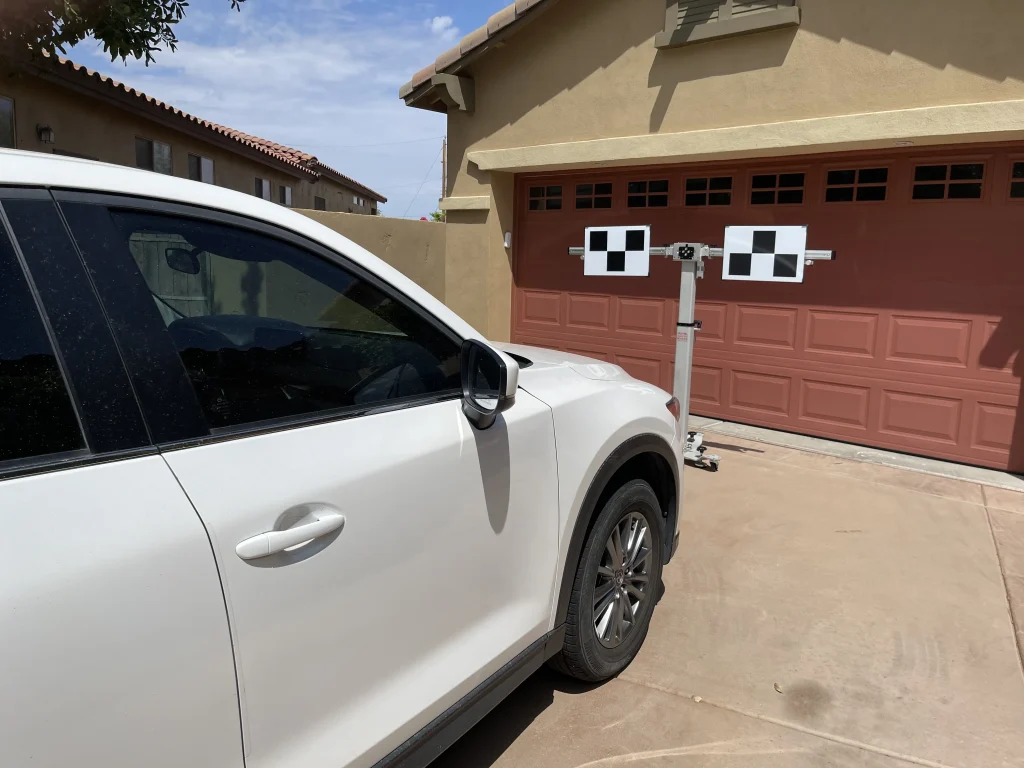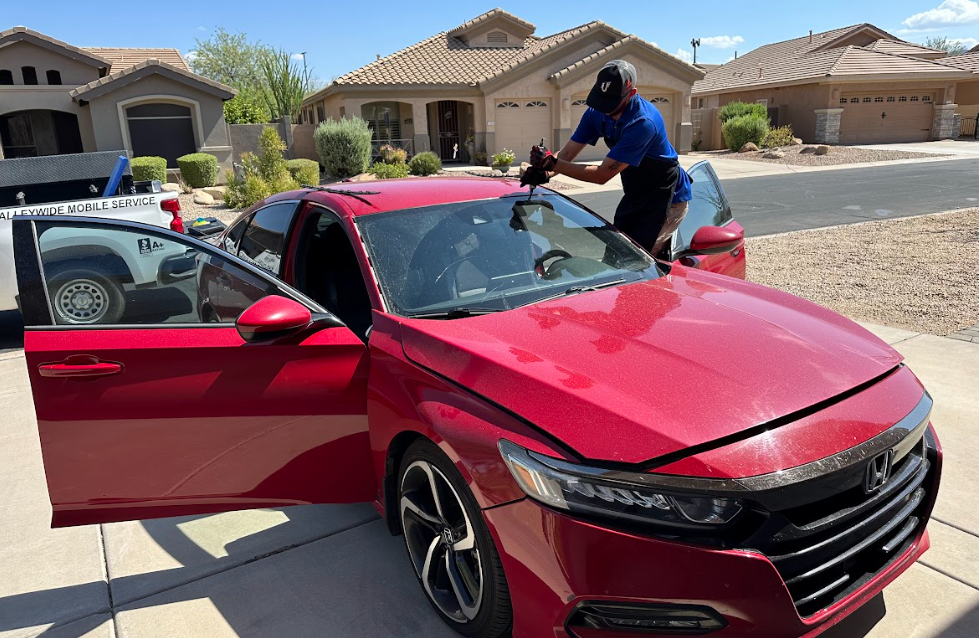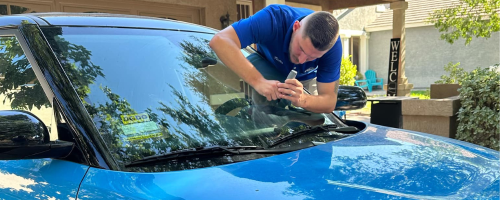Unfortunately, your windshield, a vital component of your car’s safety and structural integrity, is susceptible to damage from everyday driving hazards. From flying rocks to extreme weather, chips and cracks can appear, leaving you unsure whether repair or replacement is the best course. This comprehensive guide will equip you with the knowledge to navigate this decision about guide to windshield repair and ensure your windshield provides optimal protection.
Understanding Windshield Damage
The first step is to identify the type of damage your windshield has sustained. Common types include:
-
Bullseye chips:
Resembling a circular impact point, these usually measure less than an inch in diameter. Bullseye chips are typically caused by small rocks or debris hitting the windshield at high speeds. They can often be repaired if they are not too large or deep. However, if left untreated, they can spread and lead to more extensive damage. It is important to address bullseye chips promptly to prevent further complications and ensure your windshield’s structural integrity.
-
Star cracks:
Star cracks radiate from a central point and can vary in size. Other types of windshield damage include linear cracks, straight lines extending across the entire windshield, and combination breaks, which involve multiple types of damage occurring simultaneously. It is important to assess the size and location of the damage, as well as any potential obstructions in your line of sight, to determine the severity and necessary course of action.
-
Combination breaks
A combination of chips and cracks, often forming complex patterns. These intricate patterns can make it difficult to repair the windshield, and in some cases, replacement may be necessary. It is crucial to address combination breaks promptly to prevent further spreading and ensure the safety of the driver and passengers.
-
Stress cracks:
Caused by internal pressure or temperature changes, these appear as long, winding lines. Stress cracks can weaken the windshield’s structural integrity and may lead to sudden shattering. It is important to have stress cracks repaired or replaced as soon as possible to avoid potential accidents or injuries.
-
Pitting:
Small, shallow depressions caused by sandblasting or similar abrasive wear. Pitting can obstruct the driver’s visibility and create glare, increasing the risk of accidents. Therefore, it is essential to address pitting promptly by repairing or replacing the windshield to ensure clear vision and maintain the safety of the driver and passengers.
Assessing Repair vs. Replacement: A Guide to Windshield Repair
For minor damage, windshield repair might be the ideal solution. Here’s how to assess its viability:
- Size and location: Cracks less than 12 inches long and chips smaller than the size of a quarter, located at least 6 inches from the edge and away from the driver’s line of sight, can usually be repaired effectively.
- Depth of damage: Only damage affecting the outer layer of the windshield is repairable. If the inner layer is compromised, replacement is necessary.
- Several damages: Depending on their size and proximity, multiple damage points might necessitate replacement.
Guide to Windshield Repair: Advantages and Disadvantages
Windshield repair offers several advantages:
- Cost-effective: Repairing a windshield is significantly cheaper than replacement. Additionally, repairing a windscreen helps maintain the vehicle’s structural integrity as it does not involve removing the entire windshield.
- Time-efficient: Repairs typically take under an hour, while replacements can take several hours. Regarding disadvantages, it is important to note that not all damages can be repaired. If the damage is too extensive or in the driver’s line of sight, replacement may be the only option.
- Environmentally friendly: Repairing avoids the consumption of resources and waste generated by replacement. Furthermore, repairing a windshield reduces the demand for new glass production, contributing to a more sustainable environment.
However, repair also has limitations:
- Limited scope: Only minor damage can be effectively repaired. Major cracks or extensive damage may not be able to be repaired and would require a full replacement. Additionally, the effectiveness of repairs may vary depending on the location and size of the damage.
- Cosmetic imperfections: Repaired areas may exhibit slight optical distortions or visible resin residue. These imperfections may be noticeable to the naked eye and can affect the overall appearance of the windshield. Individuals must consider these factors when deciding whether to repair or replace their windshields.
- Potential for damage recurrence: Repairing larger cracks may not guarantee long-term stability. In such cases, a full replacement may be necessary to ensure the safety and structural integrity of the vehicle.
Guide to Windshield Replacement: When It’s Necessary
In some cases, windshield replacement becomes the only viable option:
-
Extensive damage:
Cracks exceeding 12 inches, chips larger than a quarter, damage affecting the inner layer, or damage near the edge of the windshield require replacement for safety and structural integrity.
-
Impaired visibility:
Cracks or chips obstructing the driver’s line of sight warrant immediate replacement. Additionally, windshield replacement may be necessary if the damage cannot be effectively repaired, such as when the cracks or chips are too deep or extensive.
-
Multiple damages:
Several smaller damages that collectively compromise the windshield’s integrity necessitate replacement. It is important to note that even if the damage does not fall into any of these categories, having a professional assess the windshield for potential safety concerns is still recommended.
-
Aesthetic concerns:
While not a safety issue, some individuals might opt for replacement if the repair leaves noticeable cosmetic imperfections. These imperfections could include visible cracks or discolouration that may affect the overall appearance of the windshield.
Guide to Windshield Replacement: Advantages and Disadvantages
Replacement offers several advantages:
- Uncompromised safety: A new windshield provides optimal structural integrity and clear visibility. It ensures that the windscreen can effectively protect passengers in an accident and allows for a clear view of the road, reducing the risk of accidents caused by impaired visibility.
- Improved aesthetics: A new windshield eliminates damage and restores the car’s original appearance. In addition, a new windshield can also enhance the vehicle’s resale value as it gives a fresh and well-maintained look.
- Long-term durability: A properly installed replacement windshield offers lasting protection. It is designed to withstand weather conditions and road debris, reducing the likelihood of cracks or chips. This can save car owners from costly repairs or replacements in the future.
However, replacement also comes with downsides:
- Higher cost: Replacement is significantly more expensive than repair. This is because replacing a windshield involves purchasing a new one and the labour required for installation.
- Longer downtime: The car might be unavailable for several hours while the new windshield cures. Additionally, it is important to note that not all windshields can be replaced, and some may require specialized equipment or expertise, further adding to the cost and time involved in the replacement process.
- Environmental impact: Replacement generates waste and consumes resources.
Choosing the Right Option: A Guide to Windshield Repair vs. Replacement
Ultimately, the decision between repair and replacement depends on the specific characteristics of your windshield damage. Consider the following factors:
The severity of damage:
Assess the damage’s size, location, and depth. Minor damage, such as a small chip or crack, can often be repaired effectively. Additionally, it’s important to consider your budget and insurance coverage when making this decision.
Cost and time constraints:
Compare the costs and timeframes involved in both options. If you have limited time and need your windshield fixed quickly, repair may be the better option, as it is typically faster than replacement.
Impact on safety and visibility:
Prioritize ensuring optimal visibility and structural integrity. If the damage compromises the windshield’s structural integrity or impairs your ability to see clearly, replacement may be necessary to maintain safety on the road.
Aesthetics and personal preference:
Consider the importance of a flawless appearance. If you value having a pristine windshield and want to maintain the original look of your vehicle, replacement may be the preferred choice.
Seeking professional advice:
Consult a qualified auto glass technician for an expert assessment and recommendation. They have the knowledge and experience to evaluate the extent of the damage and determine whether repair or replacement is the best course of action.
Statistics about this:
- 90% of chips and cracks can be repaired with modern technology.
- 66% of windshield repairs involve chips, while 34% involve cracks.
- 74% of crack repairs are 14 inches or under.
- Repair costs are typically 60-75% lower than replacement costs.
- Windshield replacement generates significant waste, including glass shards, plastic packaging, and adhesives.
- Windshield repair consumes fewer resources and generates less waste than replacement.
- Opting for repair whenever possible can help reduce your environmental footprint.
- The average cost of windshield repair is $90-$150.
- The average price of a windshield replacement is $400-$700.
- 60% of drivers know the cost difference between repair and replacement.
- 80% of drivers would choose repair over replacement if they knew the cost difference.
Source References:
Conclusion: Guide to Windshield Repair vs. Replacement
Understanding the differences between windshield repair and replacement empowers you to make informed decisions regarding your car’s safety and budget. By carefully evaluating the damage and considering your personal needs, you can choose the solution that best fits your situation. Remember, prioritizing safety and structural integrity should always be your primary concern.
FAQs: Guide to Windshield Repair vs. Replacement
-
What is the difference between windshield repair and replacement?
- Repair involves injecting a special resin into the damaged area to fill it and restore structural integrity. Replacement involves removing the entire windshield and installing a new one.
-
When should I consider repair?
- Repair is suitable for minor damage, typically chips less than a quarter-inch in diameter and cracks less than 12 inches long, located away from the driver’s line of sight and the edge of the windshield.
-
When is replacement necessary?
- Replacement is essential for extensive damage, including cracks exceeding 12 inches, chips larger than a quarter-inch, damage affecting the windshield’s inner layer, or cracks near the edge. It’s also necessary when the damage impairs visibility or compromises structural integrity.
-
Will a repaired windshield be as strong as a new one?
- Properly repaired windshields can regain up to 90% of their original strength. However, they might not be as strong as a new windshield, especially for larger cracks.
-
How long does a repair take?
- Most repairs can be completed within an hour, making them a quick and convenient option.


